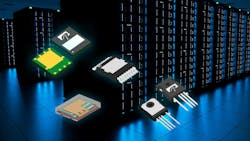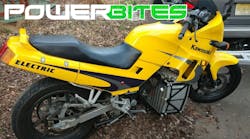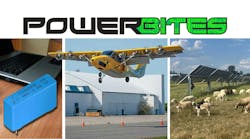SiC and GaN Power MOSFETs, ICs Support 800-V AI Architectures
What you'll learn:
- How Alpha and Omega Semiconductor's products support NVIDIA's 800-V AI architecture.
- Key features of these new power-conversion devices.
The innovative 800-V DC architecture announced by NVIDIA, intended to power the next generation of AI data centers, has garnered support from Alpha and Omega Semiconductor (AOS). AOS says its products are well-suited for the crucial power-conversion stages needed to support the megawatt-scale racks in next-generation AI factory facilities. This includes:
- High-voltage conversion: AOS's SiC devices, such as the Gen3 AOM020V120X3 or topside-cooled AOGT020V120X2Q. They offer superior voltage handling and low losses for either the power sidecar configuration or the single-step conversion of 13.8-kV AC grid power directly to 800 V DC at the data center perimeter.
- High-density DC-DC conversion: Within the racks, AOS’s 650-V GaN FETs, such as the company’s 100-V GaN FETs like AOFG018V10GA1 and its upcoming AOGT035V65GA1, provide the required density essential for converting the 800-V DC power to the lower voltages needed by GPUs.
- Packaging innovations: AOS’s 80-, 100-V stacked-die MOSFETs like AOPL68801, and 100-V GaN FETs share a common package footprint, allowing designers to trade off cost and efficiency in the secondary side of LLC topologies.
- Multiphase controllers: AOS also offers high-performance, multi-rail 16-phase controllers for the 54 V to 12 V and further downstream conversion stages to the AI SoC.
Next in This Edition of PowerBites
More PowerBites
About the Author
Lee Goldberg
Contributing Editor
Lee Goldberg is a self-identified “Recovering Engineer,” Maker/Hacker, Green-Tech Maven, Aviator, Gadfly, and Geek Dad. He spent the first 18 years of his career helping design microprocessors, embedded systems, renewable energy applications, and the occasional interplanetary spacecraft. After trading his ‘scope and soldering iron for a keyboard and a second career as a tech journalist, he’s spent the next two decades at several print and online engineering publications.
Lee’s current focus is power electronics, especially the technologies involved with energy efficiency, energy management, and renewable energy. This dovetails with his coverage of sustainable technologies and various environmental and social issues within the engineering community that he began in 1996. Lee also covers 3D printers, open-source hardware, and other Maker/Hacker technologies.
Lee holds a BSEE in Electrical Engineering from Thomas Edison College, and participated in a colloquium on technology, society, and the environment at Goddard College’s Institute for Social Ecology. His book, “Green Electronics/Green Bottom Line - A Commonsense Guide To Environmentally Responsible Engineering and Management,” was published by Newnes Press.
Lee, his wife Catherine, and his daughter Anwyn currently reside in the outskirts of Princeton N.J., where they masquerade as a typical suburban family.
Lee also writes the regular PowerBites series.





